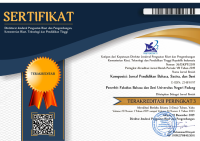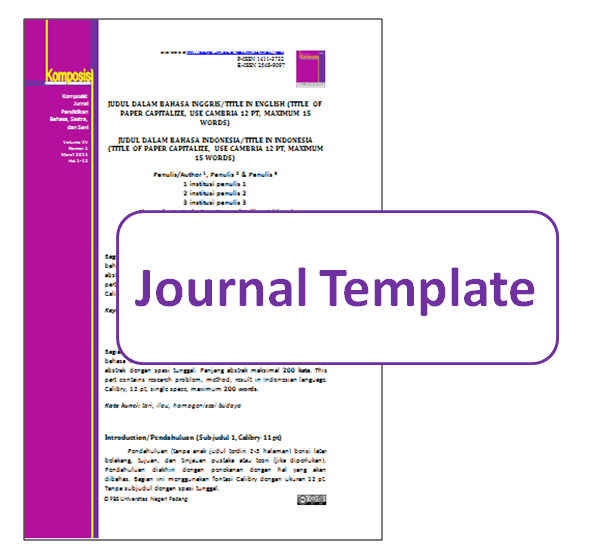BALRAM’S STRATEGY OF USING SYMBOLIC CAPITAL IN ADIGA’S THE WHITE TIGER
 ), Sri Nurhidayah(2),
), Sri Nurhidayah(2), (1) STKIP Bina Insan Mandiri
(2) STKIP Bina Insan Mandiri
 Corresponding Author
Corresponding Author
Copyright (c) 2019 Komposisi: Jurnal Pendidikan Bahasa, Sastra, dan Seni
DOI : https://doi.org/10.24036/komposisi.v20i2.106959
Full Text:
 Language : en
Language : en
Abstract
This research focuses on exploring Balram’s success from the factor of his strategy in using symbolical capital. Society lives in the field where symbolic capital impact over the other capital. It can be also reflected in the story, from Balram’s life to the other characters he witnessed. Therefore, this research’s problem focuses on how Balram uses symbolic capital as his strategy to survive in society in Aravind Adiga’s The White Tiger. To accommodate the analysis, the research uses Bourdieu’s theory of symbolical capital that explains its importance for Balram. This research is qualitative and the approach is phenomenological approach. The data are the quotation from the novel. The source of the data is Adiga’s The White Tiger. The technique of data collection is documentation. The technique of data analysis is interpretation. Based on the analysis, it can be resulted that symbolic capital is crucial to drag up someone’s life. Symbolic capital can be used as the strategy (class distinction) to survive in the field where capital is exchanged. Balram’s driving certificate, status, environment, and others have exposed how it adheres symbolical status. Other characters are also helpful in explaining how symbolical capital affects their life, especially in the issue of dominance.
Keywords
References
Adiga, Aravind. (2008). The White Tiger. New York: Free Press
Bourdieu, Pierre, and Loïc Wacquant. (2013). ‘Symbolic Capital and Social Classes’. Journal of Classical Sociology. https://doi.org/10.1177/1468795X12468736.
Clarke, Lames W., and Lames W. Clarke. (2018). ‘Violence Begets Violence’. In The Lineaments of Wrath. https://doi.org/10.4324/9781351303606-1.
Grenfell, Michael. (2010). Pierre Bourdieu: Key Concepts. Pierre Bourdieu: Key Concepts. https://doi.org/10.1017/UPO9781844654031.
Harrits, Gitte Sommer. (2011). ‘Political Power as Symbolic Capital and Symbolic Violence’. Journal of Political Power. https://doi.org/10.1080/2158379X.2011.589178.
Pasari, Priyanka. (2015). ‘" The White Tiger " On Half Baked India and Social and Political Deterioration’. IOSR Journal Of Humanities And Social Science. https://doi.org/10.9790/0837-20570106.
Pellandini-Simányi, Léna. (2014). ‘Bourdieu, Ethics and Symbolic Power’. Sociological Review. https://doi.org/10.1111/1467-954X.12210.
Schotland, Sara D. (2011). ‘Breaking out of the Rooster Coop: Violent Crime in Aravind Adiga’s White Tiger and Richard Wright’s Native Son’. Comparative Literature Studies. https://doi.org/10.1353/cls.2011.0006.
Wacquant, Loïc. (2004). ‘Following Pierre Bourdieu into the Field’. Ethnography. https://doi.org/10.1177/1466138104052259.
 Article Metrics
Article Metrics
 Abstract Views : 282 times
Abstract Views : 282 times
 PDF Downloaded : 33 times
PDF Downloaded : 33 times
Refbacks
- There are currently no refbacks.
Copyright (c) 2019 Komposisi: Jurnal Pendidikan Bahasa, Sastra, dan Seni

This work is licensed under a Creative Commons Attribution-NonCommercial 4.0 International License.











